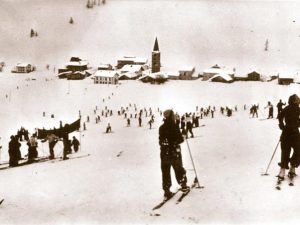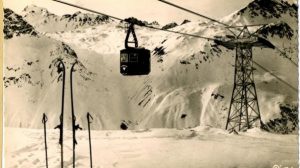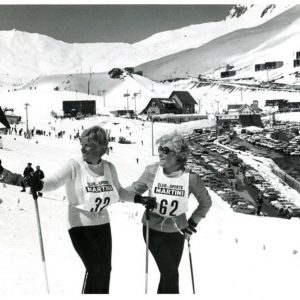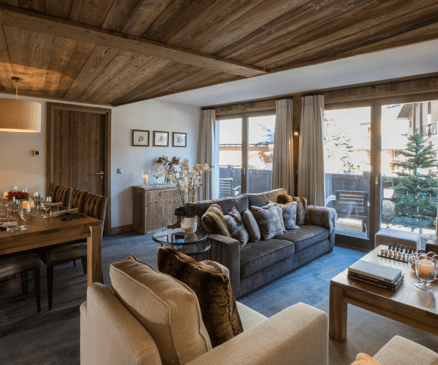A brief history of skiing in Val d’Isere




Val d’Isère has a special atmosphere that charms you from the moment you arrive, walking around the old town every building and every narrow street is shrouded in history.
There has been habitation in Val d’Isere since before Roman times, but after many years of being semi-derelict the first real landmark of the town, the parish church – which can still be seen today – was built in 1664.
Tourism in Val d’Isere began to take off when the very first hotel, Hotel Le Parisien, opened in 1888. However it wasn’t until the 1930s that the skiing trend arrived in Val d’Isère and it became a popular winter destination.
Development of the resort
Having fallen in love with Val d’Isère during his first stay in 1929, French industrialist Jacques Mouflier was convinced of its potential as a resort. The mayor, Nicolas Bazile, thought this was impossible because of the harsh climate and the remote location of the village. When the two men met in 1931, plans for the resort began to emerge.
From 1932, the development of public infrastructures began with a post office, power supply, running water and the building of an approach road, as well as the first hotels.
In 1936, the first tourist office was created to represent all of the resort’s business activities. A planning scheme was approved to ensure the characteristics of the village would be safeguarded, splitting the municipal territory into two zones (sports activities and real estate).
In 1937, two ministers got stuck in a storm, the same year that the Iseran pass opened, and Val d’Isère became a household name in France.
The beginning of ski schools
During the winter of 1932-1933, a handful of tourists took skiing lessons from two Austrian instructors. Four enthusiasts from Val d’Isère were quick to pick up the ‘snowplough’ technique taught by the Austrians, and the first ‘Vosge-style lessons’ were delivered by Alsation industrialist Charles Diebold.
Over the winters that followed, the youngsters of Val d’Isère broke away and started teaching others to ski. The first French ski school, ESF, was established during the 1936-37 season with around a dozen instructors.
In 1937-1938, the central training school opened in Le Joseray and attributed the first instructor certificates. The Chamois de France exam was born.
Developing the ski area
In 1938, the Société des Téléphériques de Val d’Isère was founded and a vast infrastructure programme announced, with a long-term ambition to create 34 kilometres of slopes at elevations of between 1,850 and 3,300 metres, that would allow skiers to cover the entire distance without once removing their skis, taking the same lift or sking down the same slope!
Work started in May 1939 and the Solaise cable car was completed in December 1942. After the war, the installation work continued and extended higher up the mountain. By the early 1960s, the ski area was equipped with around a dozen ski tows and two cable cars.
In 1968, Val d’Isere resident Jean-Claude Killy won three gold medals at the Olympic Games in Grenoble by winning the downhill, the giant and the slalom. In his honour, the region of Tignes and Val d’Isere were named the Espace Killy.
Over the past decades, the resort has grown in size and popularity and is one of the most famous resorts in the world.








